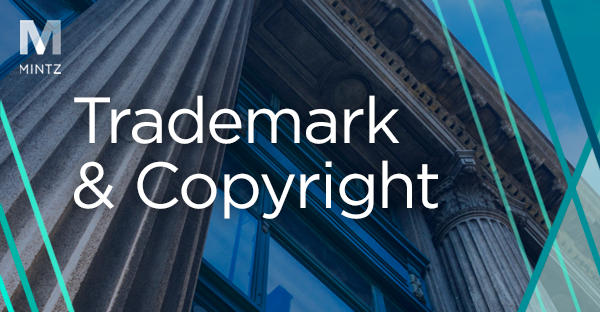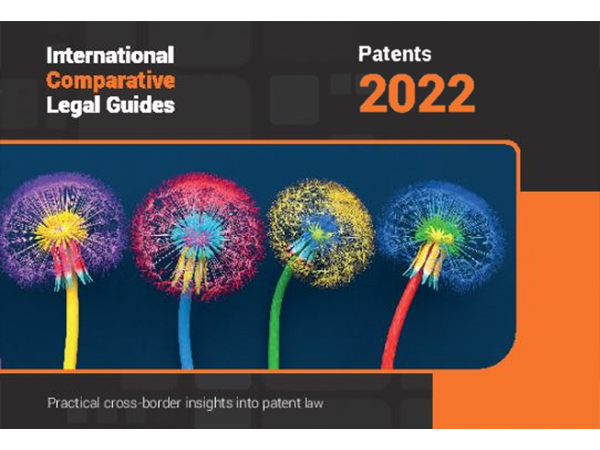
Intellectual Property
Viewpoints
Filter by:
Alexa: What is venue?
August 23, 2019 | Blog | By Andrew DeVoogd, Serge Subach
A recent decision from the Northern District of New York provides a detailed outline for analyzing venue in patent infringement cases, and may provide facts that companies with equipment installed in other districts should understand.
Read more
ANDA Applicant Dismissed for Lack of Venue Under § 1400(b) as District of New Jersey Departs from its own and the District of Delaware’s Prior Rulings
August 21, 2019 | Blog | By Adam Samansky, Peter Cuomo, Joe Rutkowski
On August 13, 2019, the United States District Court for the District of New Jersey, in Valeant Pharmaceuticals N. Am. LLC v. Mylan Pharmaceuticals Inc., No. 18-cv-14305, held that venue was not proper in New Jersey over Mylan in a patent infringement action arising from Mylan’s submission of an Abbreviated New Drug Application (“ANDA”) seeking approval to market a generic version of the drug, Jublia®.
Read more
Federal Circuit Cautions Against Rigid Approach to Prosecution History Estoppel in Fourth Appeal from ALIMTA® Litigations
August 19, 2019 | Blog | By Adam Samansky, Peter Cuomo, Nana Liu
On August 9, 2019, the United States Court of Appeals for the Federal Circuit, in Eli Lilly & Co. v. Hospira, Inc., Nos. 2018-2126, 2127, 2128, reversed in-part and affirmed in-part a district court’s determination of infringement. The Federal Circuit reversed the district court’s finding of literal infringement but ultimately affirmed judgments of infringement based on the doctrine of equivalents.
Read more
PTAB Confirms (Again) that the AIA’s “Enhanced Estoppel” Provision Applies to Concurrent IPR Proceedings
August 12, 2019 | Blog | By Andrew DeVoogd
In a decision from the Patent Trial and Appeal Board (“the Board”) issued last week, the Board confirmed that the “enhanced estoppel” provision of 35 U.S.C. § 315(e)(1) applies to co-pending inter partes review (“IPR”) proceedings when a final written decision issues in a first IPR. The panel flatly rejected a Petitioner’s attempt to apply the Federal Circuit’s decision in Shaw Indus. Group, Inc. v. Automated Creel Sys., Inc., 817 F.3d 1293 (Fed. Cir. 2016) to those circumstances.
Read more
Effect of Prosecution History Estoppel on Infringement Claim under Doctrine of Equivalents
August 9, 2019 | Blog | By Marc Morley
The Federal Circuit in Amgen Inc. v. Coherus Biosciences Inc. affirmed a district court decision that once certain subject matter is clearly and unmistakably surrendered during prosecution, the patentee is barred from asserting an infringement claim under the doctrine of equivalents.
Read more
Give and Take: IPR of Pre-AIA Patent is NOT an Unconstitutional Taking
August 9, 2019 | Blog | By Marc Morley
On July 30, 2019, the Federal Circuit held that retroactive application of IPR (inter partes review) proceedings to pre-AIA (America Invents Act) patents is not an unconstitutional taking under the Fifth Amendment (Celgene Corp. v. Peter; appeals from IPR2015-01096, IPR2015-01102, and IPR2015-01103).
Read more
Representations Made by a Patentee during Foreign Prosecution May Be Used in Claim Construction for U.S. Patents
July 22, 2019 | Blog | By Marc Morley, Melissa Brayman
Claim construction, the process by which a court interprets the scope and meaning of a patent’s claims, is a crucial part of patent litigation. In fact, claim construction can make or break a patentee’s case for infringement and/or validity.
Read more
PTAB Clears Up Uncertainty Regarding the Rules on Conferring with a Witness During Inter Partes Review Depositions
July 15, 2019 | Blog | By Daniel Weinger
Last week the Patent Trial and Appeal Board (“PTAB”) designated as precedential a decision from 2014, which found that counsel can confer with a deponent at the conclusion of cross examination and prior to redirect. Through its designation of Focal Therapeutics, Inc. v. Senorx, Inc., IPR2014-00116, Paper 19 (P.T.A.B. July 21, 2014) as precedential, the PTAB has made clear that although counsel may not confer with a witness during the cross-examination portion of a deposition, counsel may confer with a witness after cross-examination has concluded but before the redirect portion of the deposition commences.
Read more
Help from the PTAB in Applying USPTO § 101 Subject Matter Eligibility Guidance
July 12, 2019 | Blog | By Christina Sperry
In July 2019 the U.S. Patent Trial and Appeal Board (PTAB) newly designated four decisions as informative to highlight the PTAB’s general consensus on issues considered in these cases. All four cases involve the PTAB applying the U.S. Patent and Trademark Office’s January 2019 guidance for determining subject matter eligibility under 35 U.S.C. § 101. The decisions focus on whether claims integrate a judicial exception into a practical application so as to be subject matter eligible.
Read more
U.S. Supreme Court Adopts Rule Protecting a Trademark Licensee’s Ability to Use a Trademark after a Bankrupt Licensor’s Rejection of the License
July 8, 2019 | Blog | By Susan Neuberger Weller, Alexander Roan, Tim McKeon
This past May, in a highly-anticipated decision, the Supreme Court held in Mission Product Holdings, Inc. v. Tempnology, LLC that a debtor’s rejection of an executory contract under Section 365 of the Bankruptcy Code has the same effect as a breach of contract outside of bankruptcy. The decision resolves an inter-circuit split on the effect of a bankrupt trademark licensor’s rejection of a trademark license, a question regarded by legal experts in the trademark community as the most significant unresolved legal issue in trademark licensing.
Read more
Effect of A Restriction Requirement on Prosecution History Estoppel
July 2, 2019 | Blog | By Christina Sperry
The decision whether to issue a Restriction Requirement during patent prosecution lies with the patent examiner, not the patent applicant. A Restriction Requirement can nevertheless trigger prosecution history estoppel that limits the scope of an applicant’s issued claim. The Federal Circuit’s recent decision in UCB, Inc. v. Watson Laboratories Inc. helps show how this situation can happen and how applicants can help prevent an examiner’s decision from adversely affecting patent scope.
Read more
One Size Does Not Fit All When It Comes to Economic Theories Used to Determine Royalty Rates
July 1, 2019 | Blog | By Michael Renaud, James Wodarski, Matthew Galica
Calculating royalty rates as part of a patent dispute often becomes a hotly-disputed issue, where opposing economic theories from expert witnesses are pinned against one another. As a litigant, care must be taken when deciding which economic theory to advance—and what facts to rely on—in support of a particular royalty rate. Given the varying and unique nature of disputes, a singular economic approach to determining a royalty rate is impractical and, oftentimes, inappropriate.
Read more
Federal Circuit Closes Another AIA Loophole
June 28, 2019 | Blog | By Michael Van Loy
The Federal Circuit recently ruled that state sovereign immunity does not apply in Inter Partes Review (IPR) proceedings, closing another America Invents Act (AIA) loophole. The case, Regents of the University of Minnesota v. LSI Corporation and Avago Technologies U.S. Inc. (Fed. Circ., 2018-1559), included the review of six Patent Trial and Appeal Board (PTAB) IPRs where the Regents of the University of Minnesota (UMN) filed motions to dismiss based on state sovereign immunity.
Read more
U.S. Supreme Court to Review Copyrightability of Privately-Produced Annotated State Statutory Compilations
June 28, 2019 | Blog | By Susan Neuberger Weller
Earlier this week, the Supreme Court granted the State of Georgia’s petition to review the Eleventh Circuit’s decision in Code Revision Comm'n v. Public.Resource.Org, Inc., 906 F.3d 1229 (11th Cir. 2018). In that case, the Eleventh Circuit held that the privately-compiled but officially-sanctioned and adopted Official Code of Georgia Annotated (OCGA) was not protected by copyright under the “government edicts” doctrine.
Read more
FUCT? You Heard That Right: Refusing to Register “Scandalous” and “Immoral” Trademarks is Unconstitutional
June 27, 2019 | Blog | By Susan Neuberger Weller
The U.S. Supreme Court, in a split decision, held that the federal ban on registering “scandalous” and “immoral” trademarks is an unconstitutional violation of free speech under the First Amendment of the US Constitution. The trademark FUCT is what was at issue in Iancu v. Brunetti, case number 18-302 (June 24, 2019). Although the mark had been in use on clothing for many years, it was never accepted for registration by the US Trademark Office on grounds that it violated the ban on registration of “scandalous” and “immoral” marks under Section 1052(a) of the Lanham Act.
Read more
District of Delaware Dismisses ANDA Applicant for Lack of Venue under TC Heartland and In re Cray
June 27, 2019 | Blog | By Joe Rutkowski
On June 17, 2019, the United States District Court for the District of Delaware, in Novartis Pharmaceuticals Corp. v. Accord Healthcare Inc., et al., No. 18-cv-01043, held that venue was not proper in Delaware over Mylan Pharmaceuticals Inc. (“MPI”) in connection with Novartis’s Hatch-Waxman patent infringement claim arising from MPI’s submission of an Abbreviated New Drug Application (“ANDA”) seeking approval to market a generic version of the drug, Gilenya® (fingolimod).
Read more
Supreme Court Declines to Address the Question of Article III Standing to Appeal a Final Written Decision from the PTAB
June 20, 2019 | Blog | By Daniel Weinger
This week, the Supreme Court left open the question of Article III standing with regards to appealing a final written decision from the Patent Trial and Appeals Board (“PTAB”) that is favorable to the patent owner. On Monday, the Supreme Court denied two petitions for certiorari that sought to appeal final written decisions (“FWD”) adverse to the petitioner in an inter partes review proceeding, in that the PTAB declines to cancel all claims under review.
Read more
Criminal Statute for Organized Crime Now Available to Combat Trade Secret Theft – But What is an Act of Trade Secret Theft under Civil RICO?
June 18, 2019 | Blog | By Michael Renaud, Nicholas Armington
The DTSA standing alone provides significant recourse for trade secret owners who have fallen victim to trade secret theft. Apart from the protection provided by the DTSA itself, however, the statute also allows trade secret owners to leverage the Racketeer Influence and Corrupt Organizations Act (RICO), a statute passed to address organized crime, to combat trade secret misappropriation. The DTSA does this by making trade secret theft qualify as a predicate act sufficient to show racketeering activity under RICO. This fairly new tool gives trade secret owners another potent option when confronting trade secret theft.
Read more
Understanding the USPTO’s Interpretation of 35 U.S.C. § 112 for Computer-Implemented Functional Claim Limitations
June 12, 2019 | Blog | By Christina Sperry
Patent practitioners, inventors, in-house counsel, and patent examiners alike have been clamoring for more guidance on computer-implemented functional claim limitations invoking § 112(f) since the Federal Circuit’s en banc Williamson v. Citrix decision in 2015. To help answer some of those pleas, the U.S. Patent and Trademark Office (USPTO) published a Federal Register notice on January 7, 2019 to address issues under 35 USC § 112.
Read more
Navigating the Legalization of Hemp under the 2018 Farm Bill Involves Changes to the Issuance of Federal Trademarks in the Cannabis Industry
June 11, 2019 | Blog | By Susan Neuberger Weller
Legalizing “hemp” under the Agricultural Improvement Act of 2018 (2018 Farm Bill) has triggered an important change for the examination of federal trademark applications concerning cannabis and cannabis-derived goods and services. In response to the Bill’s enactment on December 20, 2018, the United States Patent and Trademark Office (USPTO) issued a new examination guide to clarify its examination procedures involving hemp goods and services. For businesses in the cannabis industry, the examination guide (recently issued on May 2, 2019) will impact the viability of federal trademark applications filed on or after December 20, 2018 that were once previously barred.
Read more
Explore Other Viewpoints:
- Data Centers & Digital Infrastructure
- AI: The Washington Report
- Antitrust and Federal Regulation
- Appellate
- Arbitration, Mediation & Alternate Dispute Resolution
- Artificial Intelligence
- Awards
- Bankruptcy & Restructuring
- California Land Use
- Cannabis
- Class Action
- Complex Commercial Litigation
- Construction
- Consumer Product Safety
- Corporate Governance (ESG)
- Cross-Border Asset Recovery
- DEI Legal Developments
- Debt Financing
- Direct Investing (M&A)
- Diversity
- EB-5 Financing
- Education & Nonprofits
- Employment
- EnforceMintz
- Environmental (ESG)
- Environmental Enforcement Defense
- Environmental Law
- Environmental, Social, and Corporate Governance (ESG)
- FDA Regulatory
- False Claims Act
- Federal Circuit Appeals
- Financial Institution Litigation
- Government Law
- Growth Equity
- Health Care
- Health Care Compliance, Fraud and Abuse, & Regulatory Counseling
- Health Care Enforcement & Investigations
- Health Care Transactions
- Health Information Privacy & Security
- IP Due Diligence
- IPRs & Other Post Grant Proceedings
- Immigration
- Impacts of a New US Administration
- Insolvency & Creditor Rights Litigation
- Institutional Investor Class Action Recovery
- Insurance & Financial Services
- Insurance Consulting & Risk Management
- Insurance and Reinsurance Problem-Solving & Dispute Resolution
- Intellectual Property
- Investment Funds
- Israel
- Licensing & Technology Transactions
- Life Sciences
- Litigation & Investigations
- M&A Litigation
- ML Strategies
- Managed Care
- Medicare, Medicaid and Commercial Coverage & Reimbursement
- Mergers & Acquisitions
- Patent Litigation
- Patent Prosecution & Strategic Counseling
- Pharmacy Benefits and PBM Contracting
- Portfolio Companies
- Privacy & Cybersecurity
- Private Client
- Private Equity
- Pro Bono
- Probate & Fiduciary Litigation
- Products Liability & Complex Tort
- Projects & Infrastructure
- Public Finance
- Real Estate Litigation
- Real Estate Transactions
- Real Estate, Construction & Infrastructure
- Retail & Consumer Products
- Securities & Capital Markets
- Securities Litigation
- Social (ESG)
- Special Purpose Acquisition Company (SPACs)
- Sports & Entertainment
- State Attorneys General
- Strategic IP Monetization & Licensing
- Sustainable Energy & Infrastructure
- Tax
- Technology
- Technology, Communications & Media
- Technology, Communications & Media Litigation
- Trade Secrets
- Trademark & Copyright
- Trademark Litigation
- Unified Patent Court (UPC)
- Value-Based Care
- Venture Capital & Emerging Companies
- White Collar Defense & Government Investigations
- Women's Health and Technology







